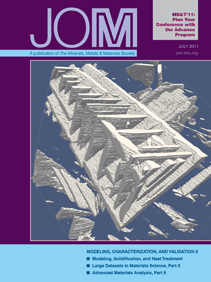 |
TMS
ONLINE | TMS
PUBLICATIONS | SITE
MAP JOM Material Matters Articles in Full-Text Format: September 2003 |
|
|
|
|
Exploring traditional, innovative, and revolutionary issues in the
minerals, metals, and materials fields.
|
|||||
| OUR LATEST ISSUE | |||||
|
VISIT THE JOM COVER GALLERY
|
How to Handle Cease-and-Desist LettersDavid V. RadackYour company has just launched an exciting new product. You have great industry “buzz” and sales are just starting to come in. Everything is looking rosy, when, suddenly, out of the blue, a certified letter from a lawyer lands on your desk accusing your great new product of infringing a patent owned by a company or individual that you never knew existed. The letter gives you one week to stop producing and selling the new product, or else litigation against your company will commence. What do you do? The first person who should be consulted when the cease-and-desist letter arrives is a competent patent attorney. Ignoring a cease-and-desist letter is a risky strategy that can lead to avoidable, expensive litigation costs as well as the payments of large damage amounts to the patent owner, possibly including the patent owner’s attorney fees for bringing a successful patent infringement action. Although handing off the matter to a competent patent attorney may incur some immediate expenses, the consequences of not doing so are dire. Simply wishing that the matter will go away is a vain hope in that if someone took the time to obtain (or purchase) a patent, analyze your product, and then hire a lawyer to write a cease-and-desist letter, it is probable that this person means business and will not simply go away if ignored. It should be noted that most cease-and- desist letters will give you a period in which to either cease and desist making and/or selling the offending product and/or respond (usually in writing) to the demand. A reasonable period of time is about two weeks, although this time period varies depending on the immediacy of the harm. For example, if your new product will be introduced at an upcoming trade show, the time period may be adjusted so as to demand certain action before the trade show. It is good to remember, however, that deadlines in these letters are not ironclad and are not statutory. That is, these dates can be negotiated or even ignored (but not forever!) when responding to the cease-and-desist letter. Once a patent attorney receives the cease-and-desist letter from you, it is customary for the hired patent attorney to acknowledge the letter by stating that it has been referred to him or her for response. This acknowledgment letter serves to put the patent owner’s attorney who wrote the letter on notice that all further correspondence in the matter must go through the company’s patent attorney. Under lawyer ethics rules, once a lawyer knows that a company or individual is being represented by another lawyer, that lawyer cannot directly contact the company or individual that is being represented. If such contact does occur, say nothing to the unethical lawyer and refer him or her to your lawyer. The patent attorney representing the accused infringing company must now conduct an investigation of the matter. Basically, he or she must review and analyze the patent that is accused of being infringed and compare the language in the claims of the patent to the accused infringing product. This analysis entails, at the very least, obtaining a file history of the patent from the United States Patent and Trademark Office (USPTO). The file history contains the entire written record of the prosecution of the patent application through the USPTO. The file history is used to analyze the scope and coverage of the claims so that it can be determined whether the patent is infringed. The file history can also be used to determine whether the patent is valid or not. The infringement and/or validity analysis made by the patent attorney is preferably reduced to a written opinion. The importance of obtaining this written opinion cannot be underestimated. If the patent attorney determines that your new product does not infringe the patent and/or the patent is invalid, this opinion can be used as a shield to protect the accused infringing company from paying enhanced damages and the patent owner’s attorney fees should the patent owner somehow prevail in the litigation. That is, even if a court disagrees with the patent attorney’s opinion and finds that the patent is valid and infringed, the infringing company, because it relied in good faith on an opinion from a competent patent attorney, will not be found guilty of willful infringement. If the cease-and-desist letter is ignored, and no opinion is obtained, willful infringement will most likely be found, with the attendant enhanced damages and attorney fee recoveries. The opinion can also be useful in guiding you should the patent be valid and infringed by suggesting ways to possibly design around the patent or suggesting that a license be taken. Cease-and-desist letters, while troublesome and certainly unwelcome, should not be ignored and must be taken seriously. The guidance and opinion of a competent patent attorney is a must when faced with these letters. David V. Radack is vice-chair of the Intellectual Property Department and a member of Eckert Seamans Cherin & Mellott, LLC in Pittsburgh, Pennsylvania. For more information, contact A.B. Silverman at Eckert Seamans Cherin & Mellott, LLC, 600 Grant Street, 44th Floor, Pittsburgh, Pennsylvania 15219; (412) 566-2077; fax (412) 566-6099; e-mail abs@escm.com.
|
Copyright © 2003 by The Minerals, Metals & Materials Society.
Direct questions about this or any other JOM page to jom@tms.org.
Search TMS Document Center Material Matters Contents JOM TMS OnLine
